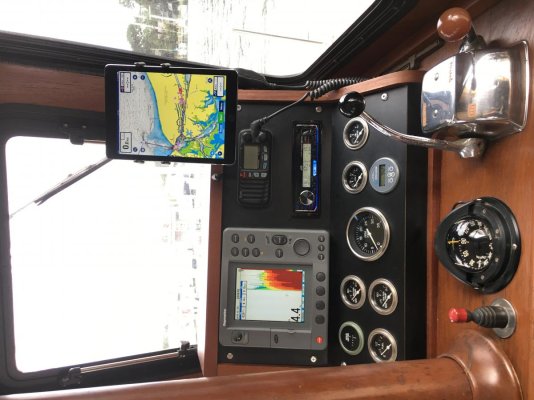Irish Rambler
Guru
- Joined
- Apr 29, 2014
- Messages
- 1,826
- Location
- FRANCE
- Vessel Name
- 'Snow Mouse.'
- Vessel Make
- BROOM FLYBRIDGE 42.
Christ I must be getting ancient !
I'm still on 'steam navigation' charts and pilot books with a Garmin GPS 72 being more accurate than a swinging compass.
I found Navionics charts were often out of date or inaccurate (despite the latest updates) in the European canals so I simply don't bother switching it on anymore.
From a personal point of view, if I read and plot a course using the charts, my mind builds and retain a 'mental picture' of the route. With Navionics its instant but my mind doesn't retain the route 'image' in the brain.
I guess I'm just old fashioned, BUT I've never got lost, run aground or missed a port.
I'm still on 'steam navigation' charts and pilot books with a Garmin GPS 72 being more accurate than a swinging compass.
I found Navionics charts were often out of date or inaccurate (despite the latest updates) in the European canals so I simply don't bother switching it on anymore.
From a personal point of view, if I read and plot a course using the charts, my mind builds and retain a 'mental picture' of the route. With Navionics its instant but my mind doesn't retain the route 'image' in the brain.
I guess I'm just old fashioned, BUT I've never got lost, run aground or missed a port.

